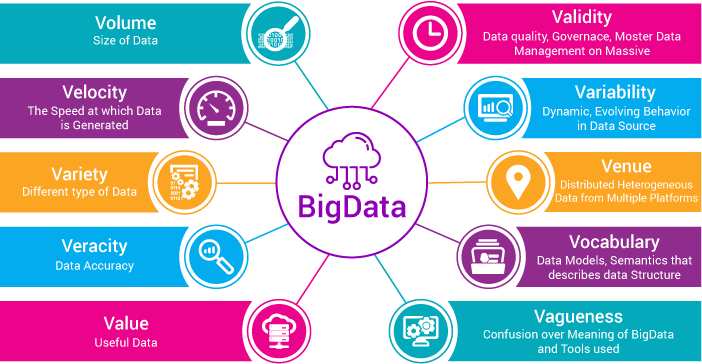Big Data: Understanding Its Significance in Today's World
"Unlocking the Power of Data for Improved Insights and Business Value"
Introduction to the Big Data
Big data refers to the large and complex sets of data generated by various sources in today's digital world. With the rise of connected devices and the internet, the amount of data generated every day has increased dramatically.
This has led to the need for new technologies and tools to manage and analyze this data effectively.
One of the main challenges of big data is its sheer volume, which makes it difficult to process and analyze using traditional methods.
This is where big data technologies come in, as they allow organizations to collect, store, and process vast amounts of data in real time.
Some of the most popular big data technologies include Hadoop, Spark, and NoSQL databases.
The significance of big data lies in its ability to provide insights and drive business value.
By analyzing big data, organizations can gain a deeper understanding of their customers, improve their operations, and make better decisions. For example, retailers can use big data to analyze customer purchase behavior and improve their marketing strategies, while healthcare organizations can use it to improve patient care and reduce costs.

Another important aspect of big data is its role in enabling the development of artificial intelligence (AI) and machine learning (ML) applications.
These technologies rely on large amounts of data to train their algorithms and improve their performance.
With big data, organizations can train their AI and ML models on larger datasets, which can lead to better results and improved accuracy.
In conclusion, big data is a critical component of today's digital world, with far-reaching implications for businesses and society.
Organizations need to invest in the necessary technologies and tools to effectively manage and analyze big data, and to leverage its insights to drive business value and innovation.

Some of the key technologies and techniques used to handle big data:
Distributed systems: Big data is often too large to be stored and processed on a single machine, so distributed systems are used to divide the data and processing across multiple nodes. Examples of distributed systems include Hadoop and Spark.
NoSQL databases: Traditional relational databases are not well-suited for big data, so NoSQL databases are used instead. These databases are designed to handle unstructured and semi-structured data, and they scale horizontally to accommodate large amounts of data. Examples include MongoDB and Cassandra.
Data lake: A data lake is a centralized repository that stores big data in its raw format, allowing organizations to store all their data at any scale.
Data streaming: Real-time data streaming is a key component of big data, allowing organizations to process data as it is generated, instead of waiting for batch processing. Technologies like Apache Kafka and Amazon Kinesis are used for this purpose.
Machine learning and AI: Machine learning and AI are critical for big data, as they enable organizations to extract insights from vast amounts of data.
Cloud computing: Cloud computing provides scalable computing resources and storage, making it an ideal platform for big data processing and analysis.
Visualization tools: Visualization tools help organizations make sense of big data by providing graphical representations of the data. Examples include Tableau and QlikView.
By using these technologies and techniques, organizations can effectively handle big data and extract valuable insights that can drive business value and innovation.
